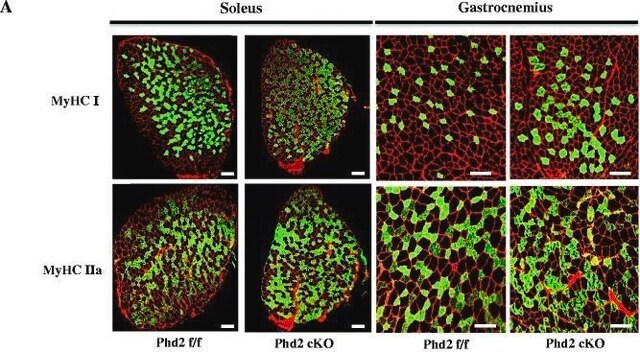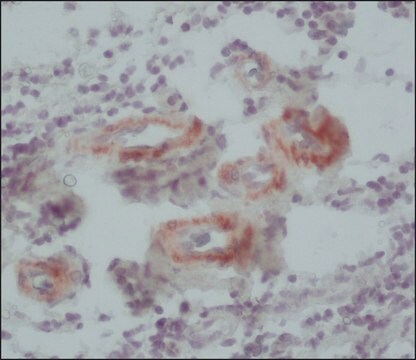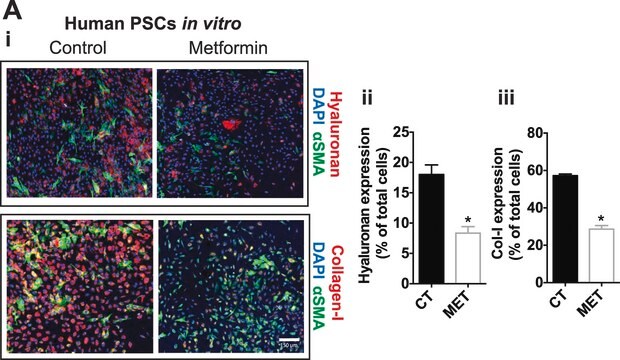M7786
Monoclonal Anti-Myosin (Smooth) antibody produced in mouse
clone hSM-V, ascites fluid
About This Item
Recommended Products
biological source
mouse
Quality Level
conjugate
unconjugated
antibody form
ascites fluid
antibody product type
primary antibodies
clone
hSM-V, monoclonal
mol wt
antigen 200-204 kDa
contains
15 mM sodium azide
species reactivity
guinea pig, human, pig, canine, rabbit, chicken
technique(s)
immunohistochemistry: 1:500 using and animal frozen section using acetone fixed human.
immunohistochemistry: suitable using using methacarn-fixed, paraffin-embedded sections of human and animal tissue
immunoprecipitation (IP): suitable
western blot: suitable
isotype
IgG1
UniProt accession no.
shipped in
dry ice
storage temp.
−20°C
target post-translational modification
unmodified
Gene Information
human ... MYH11(4629)
General description
Specificity
Immunogen
Application
- immunoblotting
- immunoprecipitation
- immunohistochemistry
- immunocytochemistry
- flow cytometry
- immunofluorescence
Biochem/physiol Actions
Disclaimer
Not finding the right product?
Try our Product Selector Tool.
Storage Class Code
10 - Combustible liquids
WGK
WGK 2
Flash Point(F)
Not applicable
Flash Point(C)
Not applicable
Choose from one of the most recent versions:
Already Own This Product?
Find documentation for the products that you have recently purchased in the Document Library.
Customers Also Viewed
Our team of scientists has experience in all areas of research including Life Science, Material Science, Chemical Synthesis, Chromatography, Analytical and many others.
Contact Technical Service









